The Motorcyclists Side of Safety Barriers
In a tragic accident in Victoria last week a truck driver was killed on the Princes Freeway when his truck rolled over after hitting a wire-rope barrier. This tragic accident re-ignited once again the debate about safety barriers. Although no rider was involved in this accident it has once again raised the question in the rider community ‘how safe are our safety barriers for riders?’
Crash barriers are designed to protect the majority of road users. This means they are designed with only cars and heavy vehicles in mind. Motorcyclists probably don’t exist in sufficient numbers to be a major factor for consideration. However, motorcyclists in Australia represent a high number of fatalities and injuries, which amounts to a huge cost on our economy and our society. Saving lives and reducing injuries should be a number one priority for everyone.
For a safety barrier to be effective it needs to absorb the energy of an impact, dissipate this energy and reduce the shock of the impact. Dissipating the energy can be achieved by increasing the contact surface of the impact across a larger area, by giving the surface flexibility and by cushioning the impact area to provide a slower deceleration.
Roadside barriers – guardrails, concrete walls and other types of barriers – represent a paradox in road safety. They are meant to restrain “out of control” vehicles, prevent damage to property, reduce injury and save the lives of drivers and passengers. However, many of them have been identified as a clear danger to motorcyclists. When a motorcyclist hits a safety barrier or slides on a road, the safety barriers, which are supposed to guard his/her safety, turn into additional major hazards.
Barrier posts are particularly aggressive, irrespective of the barriers’ other components. European studies showed that hitting posts causes a five-fold increase in the severity of injuries compared to the average motorcycle crash.
Safety Barriers in Australia
In Australia there are a variety of different types of barriers in use in different places. The most popular are the W-Beam, the Concrete and the Wire Rope Barrier.
W-Beam Barriers
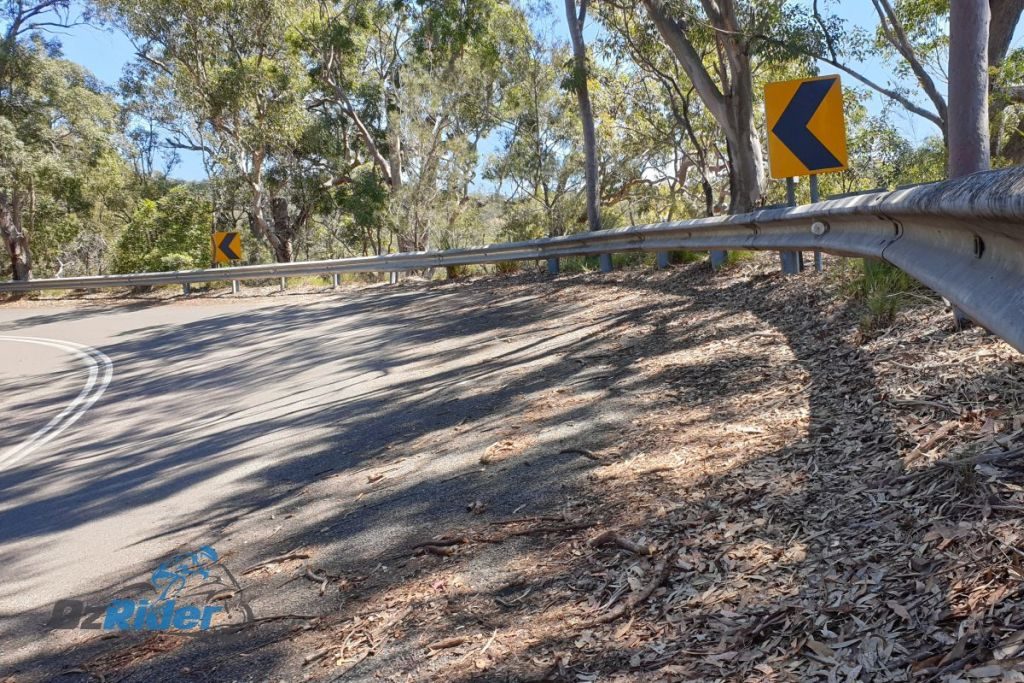
A W-Beam barrier, or guardrail, usually consists of a “W” shaped steel beam attached to metal posts. These posts are well anchored along the roadside at regular intervals. A motorcyclist sliding on the ground can pass underneath the guardrail, or can hit a post. However, neither one of these possibilities are acceptable as both will result in severe injuries. These guardrails are not a good option to stop a sliding rider.

In some areas a “motorcyclist protective rail” has been installed underneath the W-Beam to provide additional protection for motorcyclists. The protective rail prevents motorcyclists from sliding under the rail and protects them from collision with the guardrail barrier posts.
Concrete Barriers

Although the concrete barrier is continuous and therefore does not suffer the limitations of the W-Beam barriers, it poses a different kind of risk to riders. Concrete does not appropriately absorb a rider’s impact energy. However, in straight sections of motorways, as well as in wide curves, concrete barriers are effective in redirecting and dissipating the impact energy thanks to their smooth and wide surface.
In comparison to W-Beam guardrails, concrete barriers are more expensive to install, however, they require significantly less maintenance over their life cycle. In addition, they require far less repairs in the event of an impact.
Wire Rope Barrier
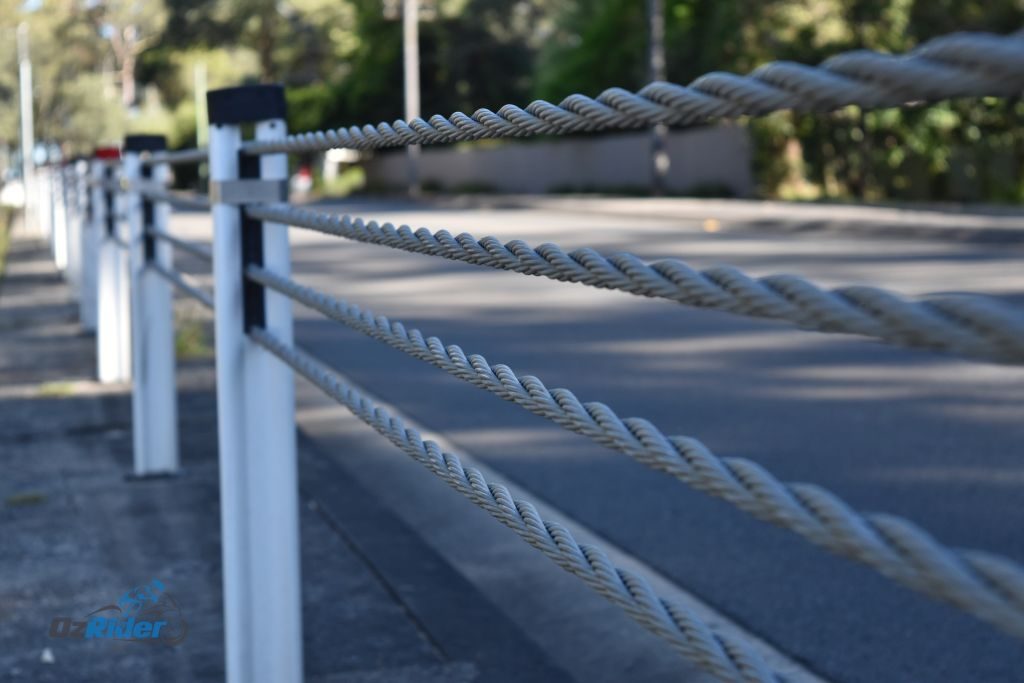
Nicknamed “cheese cutters” after a gruesome accident in NZ resulted in a 21 year old rider being fatally injured, the Wire Rope barriers (WRB) are becoming more and more popular in Australia. They consist of a few steel wires held in place by steel posts, which are designed to collapse when hit by most vehicles, thus reducing the impact.
WRB are cheaper to install than other types of barriers. In addition, they are effective in reducing the impact of a 4 wheel vehicle and can be installed in narrow roads as well as roads with small distance between carriageways.
However, WRB poses a great risk to motorcyclists. Their significantly smaller surface offers very small dispersion of the energy of an impact, causing greater injuries to riders. In addition, the posts which are designed to collapse when hit by a car or a truck, will not do so when hit by the weight of a human being, and therefore will cause severe injuries. So much so that the WRB have been banned in a number of European countries – including Britain, Austria, Norway and the Netherlands.
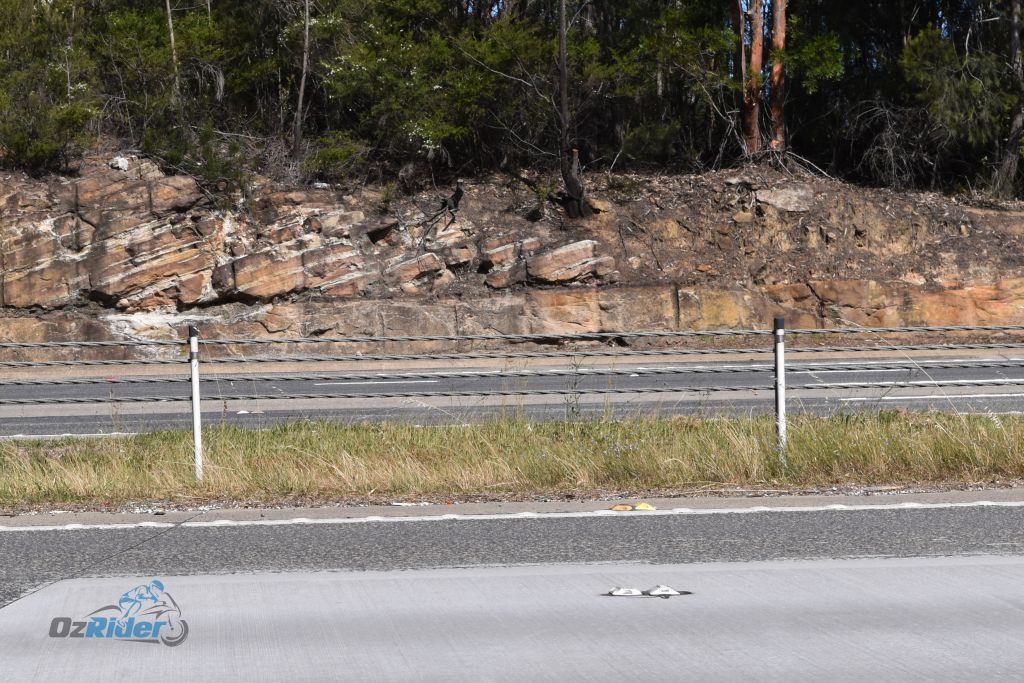
Beyond the technical specifications of the safety barriers there are other factors which need to be considered when choosing a safety barrier system. Installation, maintenance and integration in the road environment are all factors to be taken into account when considering the best cost-efficiency.
With the total cost of the WRB the case against rolling them out is compelling. Although they are cheaper to install, WRB require repairs even after minor damage as well as more maintenance than any other type of barrier. Apparently the state of Victoria has learned this the hard way.
Safety Roller Barriers
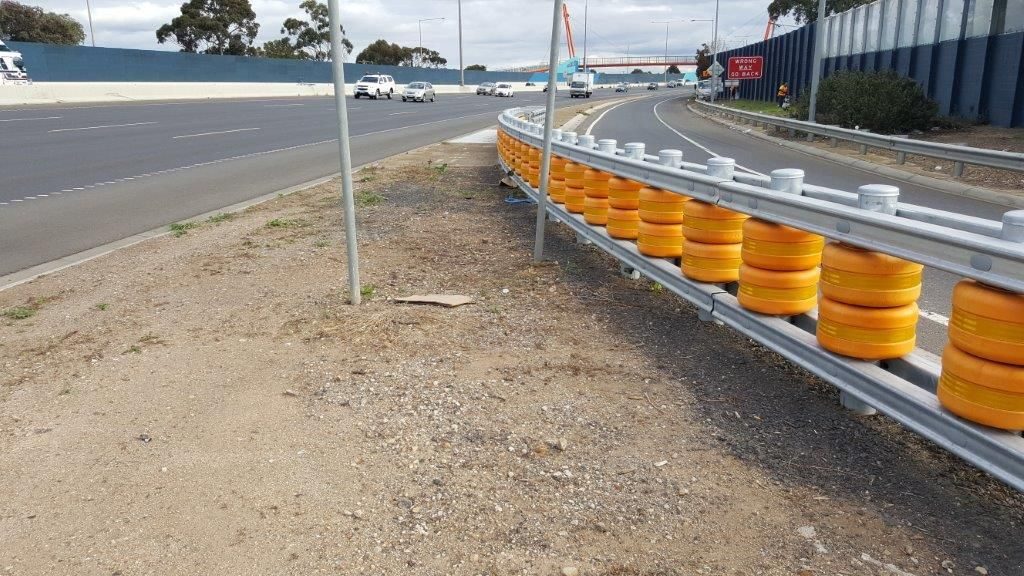
Safety Roller Barriers are a new type of barriers, developed by the Australian company KSI Global. The barriers are made of high-visibility plastic rollers on steel polls. When hit by a vehicle the rollers rotate, reducing the impact and diverting the vehicle back to the road.
According to the company the system “converts the collision energy generated from a vehicle impacting the barrier to rotational energy, while maintaining the errant vehicle within its trajectory post-impact and providing increased protection to drivers and passengers.”
The Safety Roller Barriers have been installed in Thailand, India and South Korea. They have been trialled in Victoria for about 4 years and trials commenced in WA earlier this year.
The company claims cost of both maintenance and repairs is proven to be reduced when using their system.
The main concern over this type of barriers is the spacing between rollers. Spacing must be small in order to ensure riders limbs do not get caught between the rollers. However, this new roller design appears to be safer for riders than the other barrier types currently in use.
So what can be done?
There is no silver bullet solution to the problem of safety barriers and motorcyclists safety. A variety of solutions can be implemented in different situations in order to reduce the problem of riders hitting a safety barrier. Roller Barriers, Motorcycle Protective Rails (made of steel or plastic), and cushioned terminals are only some of the devices which can be used.
Motorists and motorcyclists do not have conflicting interests. The safety of both drivers and riders can be ensured by using safety barriers that provide the best level of protection in all situations.
Be safe. Enjoy the ride.

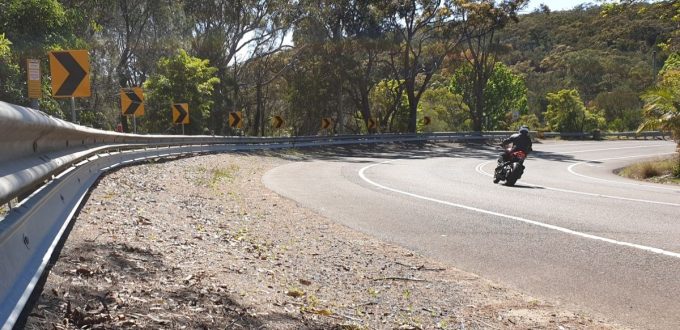
Think I have a better question for this.
Are they even necessary? We pay every year for a licence that claims we all know how to drive to the road conditions (bike or car).
We pay rego for the upkeep of the roads, but does a barrier of any sort structully help the road or make it safer! (Not safer for bikes but we know this) so apart from a freeway barrier (prob the only barrier that makes sence and most could agree on although still structurally poor).
Are they any real help on country roads when not dividing the road?
Dividing the direct on coming traffic is there only purpose which I agree on,
Are they necessary on the outside of the turn? (Money well wasted if not structurally usefull) tyre barriers have work on racetracks for years, why can’t this be applied to the road? (At least a dirivative of it anyways)?